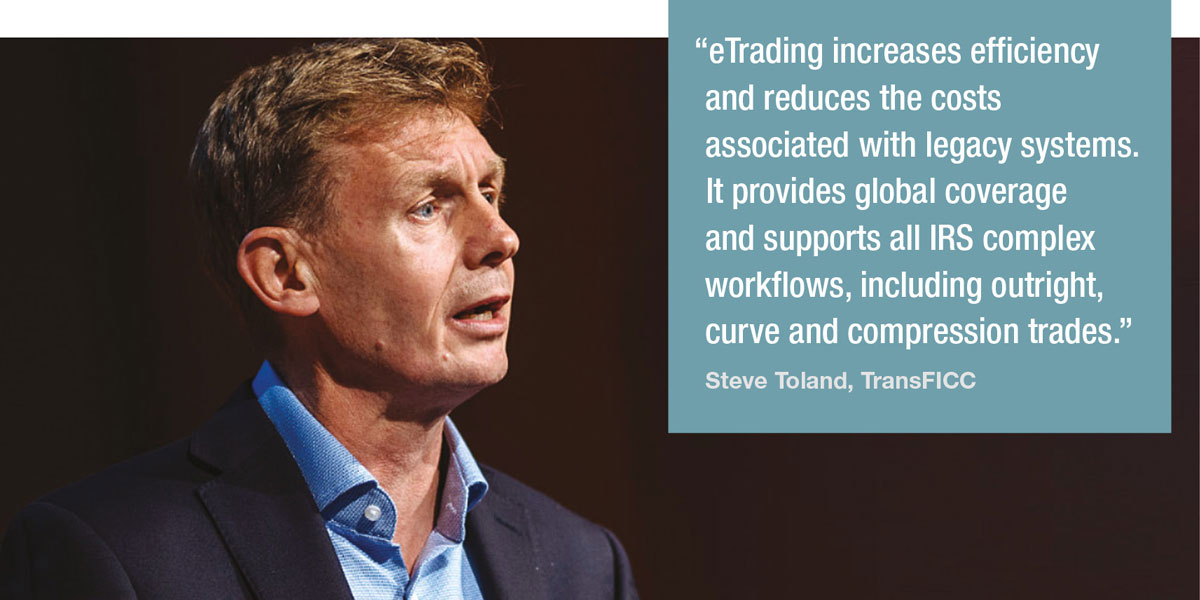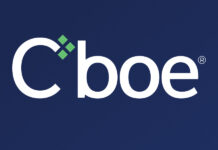In March TransFICC launched its eTrading service for interest rate swap (IRS) trading. We speak with Steve Toland, co-founder of TransFICC, about client adoption, adding asset classes and how the service is evolving in terms of automating additional workflows.
Earlier this year you launched a new eTrading service. What is it and how is it being used?
TransFICC’s eTrading service for IRS combines a desktop graphical user interface (GUI), new pricer application programming interface (API) and a historical data service. All are built on our hosted ‘One API’ service which normalises fixed income eTrading API’s along with low latency connectivity to the same trading venues.
Our initial bank client wanted to support all their IRS request for quote (RFQ) workflows via a single GUI. They also wanted our service to include global coverage, high application performance, integration with their single sign on system, and hosted support.
The Pricer API was designed to provide easy integration between the bank’s pricing engine and the eTrading service.
We now have two banks live and using the service.
What are the benefits for users?
eTrading increases efficiency and reduces the costs associated with legacy systems. It provides global coverage and supports all IRS complex workflows, including outright, curve and compression trades. It provides full security, disaster recovery and compliance as standard.
At launch you mentioned that you would add US credit to the service, where are you with this?
eTrading for US credit is being built and we expect to complete our first live trades this quarter.
It’s similar to IRS eTrading with a desktop GUI and pricer API to support all primary US credit RFQ trading. Venues include MarketAxess, Tradeweb, Bloomberg and Trumid, with others in plan. Again, it’s built on our existing ‘One API’ and hosted infrastructure where we are already live on these venues, so the connectivity is already in place.
How else is the service evolving?
Since we went live with the service, we have been asked to support more functionality and workflows.
For US credit we are adding an automated RFQ negotiation component. The problem facing banks is that for US credit, RFQ negotiation models are complex workflows and even with the TransFICC normalised ‘One API’ the bank still needs to keep track of state during the negotiation.
Our new automated RFQ simplifies trading for the bank. TransFICC sends a request to the bank’s pricer with venue, customer, instrument and size information. If the bank’s pricer application quotes, TransFICC will complete the negotiation.
The initial use case for this component is for small tickets request which can now be automated so the trading desk can focus on larger deal sizes.
What is your Historical Data Service?
The Historical Data Service is a component of eTrading which captures all events in real time from a) the venues, b) the bank’s pricer, and c) the trader inputs on the GUI.
All data is stored to disk and kept for three years. The historical data is then accessible via an API for different purposes, from reviewing inquiry history to being used by a bank’s quantitative analysis team.
Onboarding is usually a major headache for new technology. How long does it take for a bank to go live with the eTrading service?
This is a plug and play service, so is quick to install. Once legals are agreed we are able to go live in production in two weeks.
This sounds really fast but is possible as we have network connectivity to venues already in place and our services are hosted. The GUI, pricer API, Historical Data Service, and Automated RFQ are all hosted, and new hosting servers can be spun up in 24 hours.
While production is usually made via cross connects, we are happy to send test credentials to banks within a day.
How do you see this service further evolving and what levels of automation do you expect to see in the next five years?
We think automation is just getting started in fixed income. We know that the market has complex workflows, but many of these can now be automated, like compression trades. As bank’s automate more workflows, they are able to focus on pricing and risk, and segmenting customer types.
It sounds basic but pricing customers accurately and quickly improves P&L. So we do think that banks will focus on automating their workflows as much as possible. But that does not mean using AI yet. Compliance departments require an audit trail for everything and I’m not sure how AI will get signed off yet.
©Markets Media Europe 2023
©Markets Media Europe 2025














